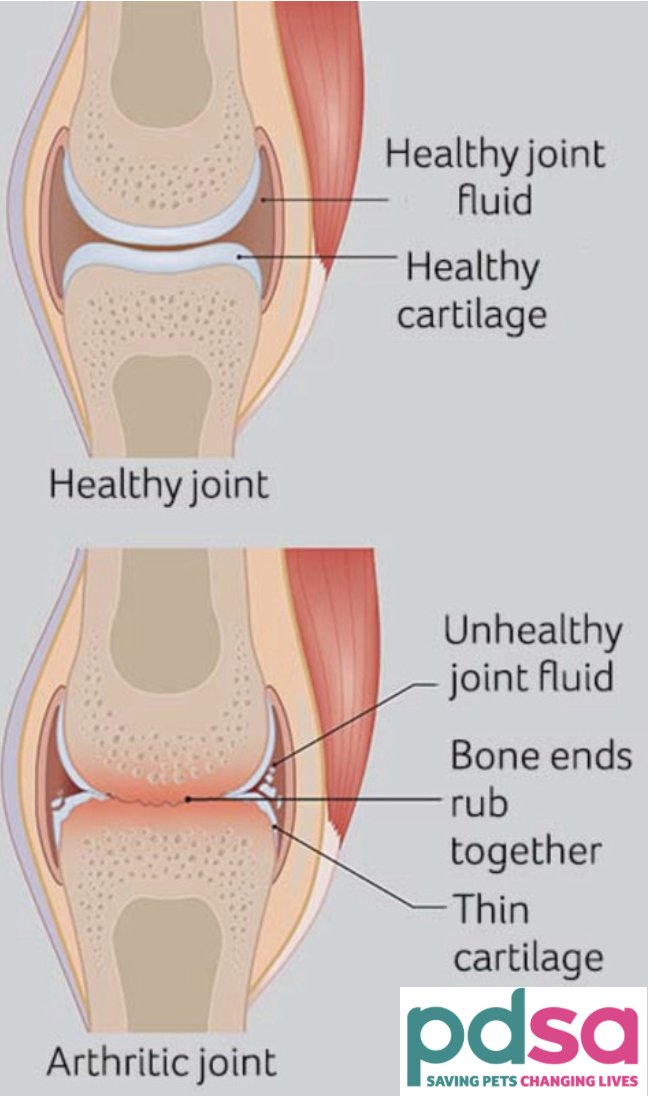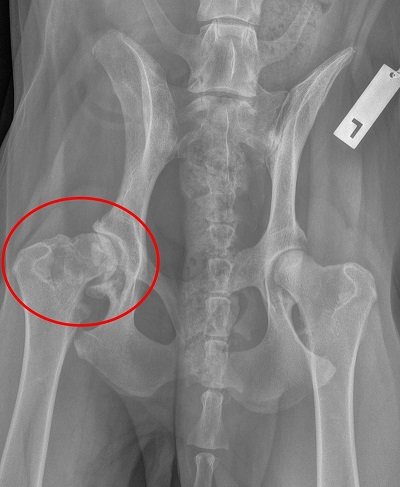Animal Arthritis
Who suffers from arthritis?
Arthritis is a musculoskeletal condition common to older and middle-aged pets, however, it can also affect animals of all ages.
What is arthritis?
Arthritis refers to damage of joint cartilage, which is the cushioning substance between bones in a joint. The most common type for arthritis seen in pets is osteoarthritis, which refers to the degeneration of cartilage over time due to age or as a consequence of injury or surgery. Other types include rheumatoid arthritis, an autoimmune disease, and septic arthritis, caused by a joint infection.
Arthritis is generally associated with pain due to the contacting bones not having the slippery soft surface the cartilage provides for them to glide across each other. For advice on spotting signs of pain in dogs and horses check out last month's blogs on ‘communicating effectively with your pets’. The primary symptom of the disease is often changes in behaviour or movement, some examples are listed below:
Limping
An animal suffering with arthritis may unevenly distribute weight to try and avoid fully loading affected limbs. Uneven weight distribution and limping is often more obvious immediately after they wake up or after exercise.
Reduced mobility
Animals may become more reluctant to exercise or move in ways they previously did because they may be painful. For example horses may become less forward and dogs may avoid walking up and down steps.
Changes in temperament
As with any condition that causes pain, your pet may become more irritable. Be cautious around your pet if you suspect arthritis is developing because they can be unpredictable and could possibly bite or kick to avoid pain.
Abnormal grooming
Pets with arthritis will sometimes lick the painful areas. This may lead to redness, inflammation or baldness. Alternatively grooming may be avoided because the movements may be painful.
Muscle atrophy
Muscle atrophy is a decrease in the mass of muscles. This happens due to inactivity and can happen slowly over time or quickly so keeping an eye on your pets muscle condition is always a great idea.
Risk Factors
Secondary to another condition or injury
Conditions such as hip or elbow dysplasia, patella luxation, cruciate ligament damage, Injury or trauma can cause secondary arthritis. The same can happen after dislocations, fractures or injuries.
Obesity
Obesity places more pressure on the joints and can therefore be a contributing factor to joint cartilage degeneration.
Diagnosis
If you suspect your dog may be suffering from arthritis take them to your vet who will be able to do a physical examination and may take x-rays. Occasionally they may need to take blood or joint-fluid to rule out infection or an autoimmune disease.
Treatment
Arthritis cannot be cured, however, there are treatments and home adaptations you can implement to help manage the development and symptoms of arthritis. Arthritis management is initially focused on pain management. Your Vet may prescribe pain relieving medication or anti-inflammatories (NSAIDs) to keep your pet comfortable.
Physiotherapy can be greatly beneficial to animals with arthritis. Aiming to avoid pain, animals may compensate for their gait, leading to muscle tightness. A physiotherapy treatment for arthritis is often focused around pain management (using special machines) and treatment of compensatory ailments.
Machines your physiotherapist might use include PEMF (pulsed electromagnetic field therapy) and low level red laser. Home adaptations can be implemented to avoid injury or stress on affected joints.
Dog Home Management
When a dog has arthritis, movement can be more challenging. To avoid aggravating the joints, avoid movement such as
Steps
Slipping (e.g. on slippery floors)
Long offlead walks
Restricting exercise is very important for arthritic dogs, however, keeping arthritic joints moving is essential to maintaining their health. An arthritic dog will often rest more, so make sure your dog has a nice comfy, warm bed they can chill out in.
Horse Home Management
Just like dogs, horses with arthritis can find movement more challenging. To avoid aggravating the joints, avoid movement such as
Turning out on hard surfaces
Riding if your horse has spinal arthritis
Slipping (e.g. on mud)
Restricting exercise is very important for arthritic horses, however, keeping arthritic joints moving is essential to maintaining their health. Turning your horse out during the day or/and at night may be a good way to allow your horse the free movement it needs, however, keeping your horse warm through the winter months is preferable for arthritis.
How to prevent arthritis
Often arthritis is unavoidable, however, there are a few precautions you can take to reduce the chance, or delay the onset, of arthritis. These precautions include:
Building exercise up gradually and keeping it frequent through the week
For example NOT taking your dog on 15 minute onlead walks through the week and then taking them for a 90 minute off lead walk at the weekend
Keeping your animal under control to avoid injury
Keeping your animal at a good weight while still providing all the nutrients they require








